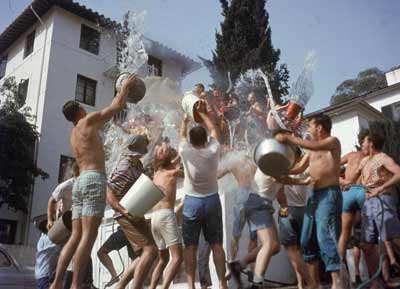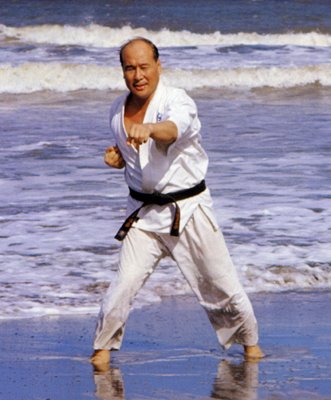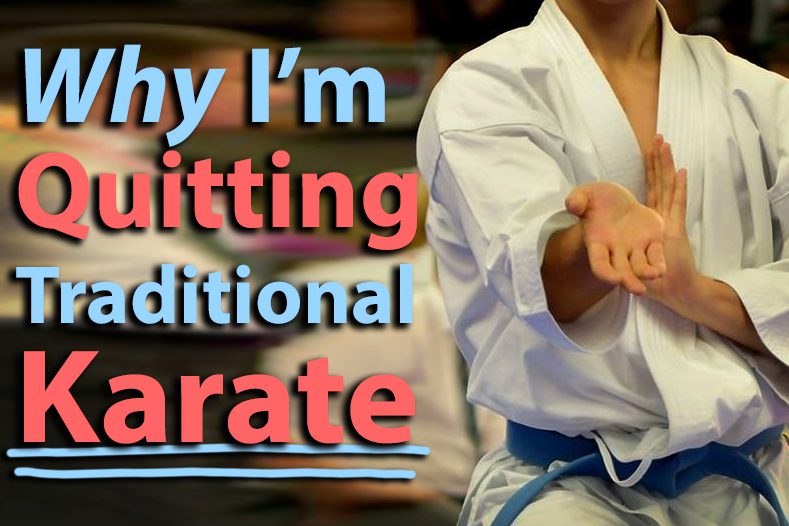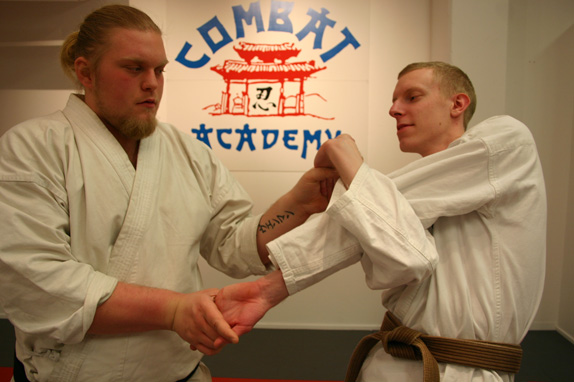As we all know, Okinawa (the birthplace of Karate, remember?) is an island completely surrounded by water. Beautiful, clear blue, water.
This means there’s a lot of beaches. As a matter of fact, many Kata are named after beaches (in Kobudo).
So, what better place to train on than a sandy beach? Actually, in the water next to the beach!
Meet “Hydraulic Resistance”!
Also known as “training in water” – It’s fun, relaxing, and effective. Even the samurai had a whole martial art dedicated to training in water (Sui-jutsu). And we ain’t talking about swimming here!
Allow me to “bore” you with a post full of facts!
Here we go:
In a joint study, researchers from England and Tasmania compared the effectiveness of water running and road running in improving maximum oxygen uptake in a group of 20 untrained young women.
After establishing baseline VO2max values, each participant was enrolled on a four-week training programme (of either road running or deep water running), with progressive aerobic interval sessions carried out three times per week. After four weeks, VO2max was retested and the women then embarked on 10 weeks of “detraining” before swapping training programmes for a further four weeks.
Both training programmes produced similar and substantial improvements in VO2max, and the researchers concluded that deep water running, in common with other aerobic activities, offers significant cardiovascular benefits when performed at the appropriate frequency (3-5 days per week), intensity (60-75% of maximum heart rate) and duration (20-60 minutes).
So running in water is like running on land.
And it feels better, since water disperses body heat about four times faster than air at the same temperature, naturally helping to maintain the core body temperature within an acceptable range, and preventing the overheating common with landbased exercise.
Okay, fair enough. Water training is at least as good as land training when it comes to training aerobic activity.
But what about strength training?
Is it as good in water as on land?
Or even better?
Well, water provides approximately 12 times the resistance of air, in every direction. Doesn’t that say it all? Many studies have been made though, and I quote from one:
“The researcher concluded that training in the water is at least as effective as training on land. The researcher also notes that there was a significant increase in strength in both of the groups, but when comparing the two groups, there was a greater improvement in the water exercisers.”
That’s right. Strength training in water gives a greater improvement on strength.
Remarkable.
Okay, so what else is there to compare?
Let’s see…
Fat loss!
Why not? To begin with, the study “Fat metabolism and acute resistance exercise in trained men” (conducted by East Carolina University) found that resistance exercise is more beneficial then aerobic exercise for fat loss. And since I already said that water provides 12 times the resistance of air, the rest is easy to figure out.
1+1=2, right?
Aerobic training, strength training, fat loss… that’s great.
“But what about injuries? Isn’t it dangerous?”
If you can’t swim, then yes it’s dangerous. Use a shallow pool.
But when it comes to safe training for the body, nothing beats training in water. Water, acting as a “giant cushion”, saves wear and tear on your muscles while protecting the joints. Perfect.
Why? Because exercise (when submerged to neck level) in water reduces gravitational pull on the body by about 90%.
Less stress on the joints.
Okay, now that we have established many benefits of training in water, what about Karate?! That’s what you came for, right?
Well, I suggest using the Tabata Protocol (that I wrote about here), mixing it with basically whatever you want to train! Kicks? Punches? Kata? Chokes (not on yourself, please)?
Everything (anything) works!
As a matter of fact (“oh no, not more facts“), the heart pumps 10 to 20% more blood per beat when the body is submerged in water (even in shallow depths)! That’s why it’s great for Tabata-style exercises. You get what I like to call “the hydraulic benefits” of both aerobic and anaerobic training.
So just grab a cold drink and head for the pool!
(And you are supposed to train after you’ve finished that drink you know!)




8 Comments